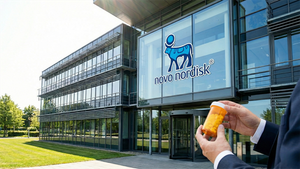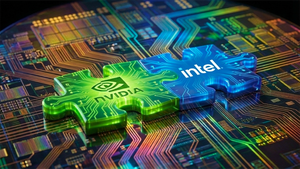Potential First-in-Class Tetravalent Bispecific Antibody Demonstrates Enhanced Binding in the Simultaneous Presence of PD-1 & VEGF
Cooperative Binding of SMT112 Enables Higher Avidity in the Tumor Microenvironment with Over 18 Fold Increased Binding Affinity to PD-1 in the Presence of VEGF in vitro
Summit Therapeutics Inc. (NASDAQ: SMMT) (“Summit,” “we,” or the “Company”) today announced that data for its novel, potential first-in-class investigational bispecific antibody, ivonescimab, will be presented at the 38th Annual Meeting of the Society for Immunotherapy of Cancer (SITC) in San Diego, CA. The poster with updated data describing ivonescimab’s mechanism of action will be displayed on Saturday November 4, 2023, from 11:55am to 1:25pm Pacific Time.
The poster is a collaborative effort between Summit and our collaboration and licensing partner, Akeso, Inc. (HKEX Code: 9926.HK), who generated and analyzed the data. The senior author of the poster is Jing Min, PhD, Senior Vice President Drug Discovery and Preclinical Science at Akeso, and it will be presented at SITC 2023 by Betty Y. Chang, PhD, Head of Research at Summit.1
Ivonescimab, known as SMT112 in the United States, Canada, Europe, and Japan, and as AK112 in China and Australia, is a novel, potential first-in-class investigational bispecific antibody combining the effects of immunotherapy via a blockade of PD-1 with the anti-angiogenesis effects associated with blocking VEGF into a single molecule. The poster describes how ivonescimab displays unique cooperative binding to each of its intended targets with higher affinity when in the presence of both PD-1 and VEGF.
This could differentiate ivonescimab as there is potentially higher expression (presence) of both PD-1 and VEGF in tumor tissue and the tumor microenvironment (TME) as compared to normal tissue in the body. Ivonescimab’s tetravalent structure (four binding sites) enables higher avidity (accumulated strength of multiple binding interactions) in the tumor microenvironment with over 18 fold increased binding affinity to PD-1 in the presence of VEGF in vitro,2 and over 4 times increased binding affinity to VEGF in the presence of PD-1 in vitro.3 This tetravalent structure, the intentional novel design of the molecule, and bringing these two targets into a single bispecific antibody with cooperative binding qualities have the potential to direct ivonescimab to the tumor tissue versus healthy tissue. The intent of this design is to improve upon previously established efficacy thresholds, in addition to side effects and safety profiles associated with these targets.
Summit has begun its clinical development of ivonescimab in order to establish its efficacy and safety in two proposed NSCLC indications:
- Ivonescimab combined with chemotherapy in patients with epidermal growth factor receptor (EGFR)-mutated, locally advanced or metastatic non-squamous NSCLC who have progressed after treatment with a third-generation EGFR tyrosine kinase inhibitor (TKI) (HARMONi trial)
- Ivonescimab combined with chemotherapy in first-line metastatic squamous NSCLC patients (HARMONi-3 trial)
Earlier this year, the first patient was treated in Summit’s license territories in the Phase III HARMONi clinical trial. Summit has opened clinical trial sites in the HARMONi-3 trial and expects to begin dosing patients in the current fiscal quarter.
Over 950 patients have been treated with ivonescimab across multiple clinical studies in different proposed indications in China and Australia, in addition to those recently enrolled in Summit’s license territories.
Lung cancer is believed to impact approximately 238,0004 people in the United States each year and approximately 477,0005 in Europe. NSCLC is the most prevalent type of lung cancer and represents approximately 80% to 85% of all incidences.6 Among patients with non-squamous NSCLC, approximately 15% have EGFR-sensitizing mutations in the United States and Europe.7 Patients with squamous histology represent approximately 25% to 30% of NSCLC patients.8
Ivonescimab is an investigational therapy that is not approved by any regulatory authority.
About the SITC 2023 Poster
Poster Title: Mechanism of Action of Ivonescimab (AK112/SMT112): A First-in-Class Tetravalent Fc-silent Bispecific Antibody with Dual Blockade of PD-1 and VEGF that Promotes Cooperative Biological Effects
SITC Abstract No.: 1194
Session Date & Time: Saturday November 4, 2023, from 11:55am to 1:25pm PT
Summit Therapeutics’ Mission Statement
To build a viable, long-lasting health care organization that assumes full responsibility for designing, developing, trial execution and enrollment, regulatory submission and approval, and successful commercialization of patient, physician, caregiver, and societal-friendly medicinal therapy intended to: improve quality of life, increase potential duration of life, and resolve serious medical healthcare needs. To identify and control promising product candidates based on exceptional scientific development and administrational expertise, develop our products in a rapid, cost-efficient manner, and to engage commercialization and/or development partners when appropriate.
We accomplish this by building a team of world class professional scientists and business administrators that apply their experience and knowledge to this mission. Team Summit exists to pose, strategize, and execute a path forward in medicinal therapeutic health care that places Summit in a well-deserved, top market share, leadership position. Team Summit assumes full responsibility for stimulating continuous expansion of knowledge, ability, capability, and well-being for all involved stakeholders and highly-valued shareholders.
About Ivonescimab
Ivonescimab, known as SMT112 in the United States, Canada, Europe, and Japan (Summit’s license territories), and as AK112 in China and Australia, is a novel, potential first-in-class investigational bispecific antibody combining the effects of immunotherapy via a blockade of PD-1 with the anti-angiogenesis effects associated with blocking VEGF into a single molecule. Ivonescimab was discovered by Akeso Inc. (HKEX Code: 9926.HK) and is currently engaged in multiple Phase III clinical trials. Summit has begun its clinical development of ivonescimab in NSCLC, enrolling the first patient in its license territory in 2023, with the intent of initiating another Phase III clinical trial in 2023. Over 950 patients have been treated with ivonescimab in clinical studies conducted by Akeso in China and Australia, with enrollment beginning recently in Summit’s license territories.
About Summit Therapeutics
Summit was founded in 2003 and our shares are listed on the Nasdaq Global Market (symbol ‘SMMT’). We are headquartered in Menlo Park, California, and we have additional offices in Oxford, UK.
For more information, please visit https://www.smmttx.com and follow us on X (formerly Twitter) @summitplc.
Summit Forward-looking Statements
Any statements in this press release about the Company’s future expectations, plans and prospects, including but not limited to, statements about the clinical and preclinical development of the Company’s product candidates, entry into and actions related to the Company’s partnership with Akeso Inc., the therapeutic potential of the Company’s product candidates, the potential commercialization of the Company’s product candidates, the timing of initiation, completion and availability of data from clinical trials, the potential submission of applications for marketing approvals, the impact of the COVID-19 pandemic on the Company’s operations and clinical trials, potential acquisitions and other statements containing the words "anticipate," "believe," "continue," "could," "estimate," "expect," "intend," "may," "plan," "potential," "predict," "project," "should," "target," "would," and similar expressions, constitute forward-looking statements within the meaning of The Private Securities Litigation Reform Act of 1995. Actual results may differ materially from those indicated by such forward-looking statements as a result of various important factors, including the results of our evaluation of the underlying data in connection with the development and commercialization activities for SMT112, the outcome of discussions with regulatory authorities, including the Food and Drug Administration, the uncertainties inherent in the initiation of future clinical trials, availability and timing of data from ongoing and future clinical trials, the results of such trials, and their success, and global public health crises, including the coronavirus COVID-19 outbreak, that may affect timing and status of our clinical trials and operations, whether preliminary results from a clinical trial will be predictive of the final results of that trial or whether results of early clinical trials or preclinical studies will be indicative of the results of later clinical trials, whether business development opportunities to expand the Company’s pipeline of drug candidates, including without limitation, through potential acquisitions of, and/or collaborations with, other entities occur, expectations for regulatory approvals, laws and regulations affecting government contracts and funding awards, availability of funding sufficient for the Company’s foreseeable and unforeseeable operating expenses and capital expenditure requirements and other factors discussed in the "Risk Factors" section of filings that the Company makes with the Securities and Exchange Commission. Any change to our ongoing trials could cause delays, affect our future expenses, and add uncertainty to our commercialization efforts, as well as to affect the likelihood of the successful completion of clinical development of SMT112. Accordingly, readers should not place undue reliance on forward-looking statements or information. In addition, any forward-looking statements included in this press release represent the Company’s views only as of the date of this release and should not be relied upon as representing the Company’s views as of any subsequent date. The Company specifically disclaims any obligation to update any forward-looking statements included in this press release.
Appendix: Glossary of Critical Terms Contained Herein
Affinity – Affinity is the strength of binding of a molecule, such as a protein or antibody, to another molecule, such as a ligand.
Avidity – Avidity is the accumulated strength of multiple binding interactions.
Angiogenesis – Angiogenesis is the development, formation, and maintenance of blood vessel structures. Without sufficient blood flow, tissue may experience hypoxia (insufficient oxygen) or lack of nutrition, which may cause cell death.9
Cooperative binding – Cooperative binding occurs when the number of binding sites on the molecule that can be occupied by a specific ligand (e.g., protein) is impacted by the ligand’s concentration. For example, this can be due to an affinity for the ligand that depends on the amount of ligand bound or the binding strength of the molecule to one ligand based on the concentration of another ligand, increasing the chance of another ligand binding to the compound.10
Immunotherapy – Immunotherapy is a type of treatment, including cancer treatments, that help a person’s immune system fight cancer. Examples include anti-PD-1 therapies.11
PD-1 – Programmed cell Death protein 1 is a protein on the surface of T cells and other cells. PD-1 plays a key role in reducing the regulation of ineffective or harmful immune responses and maintaining immune tolerance. However, with respect to cancer tumor cells, PD-1 can act as a stopping mechanism (a brake or checkpoint) by binding to PD-L1 ligands that exist on tumor cells and preventing the T cells from targeting cancerous tumor cells.12
PD-L1 – Programmed cell Death Ligand 1 is expressed by cancerous tumor cells as an adaptive immune mechanism to escape anti-tumor responses, thus believed to suppress the immune system’s response to the presence of cancer cells. 13
T Cells – T cells are a type of white blood cell that is a component of the immune system that, in general, fights against infection and harmful cells like tumor cells.14
Tetravalent – A tetravalent molecule has four binding sites or regions.
Tumor Microenvironment – The tumor microenvironment is the ecosystem that surrounds a tumor inside the body. It includes immune cells, the extracellular matrix, blood vessels and other cells, like fibroblasts. A tumor and its microenvironment constantly interact and influence each other, either positively or negatively.15
VEGF – Vascular Endothelial Growth Factor is a signaling protein that promotes angiogenesis. 16
___________________________________
1 Poster Authors: Tingting Zhong, Zhaoliang Huang, Xinghua Pang, Chunshan Jin, Xinrong He, Jose G. Montoya, Hugh Wang, Betty Y Chang, Michelle Xia, Baiyong Li, Jing Min
2 Zhong, et al, SITC 2022 ; Zhong, et al, SITC 2023
3 Zhong, et al, SITC 2023
4 American Cancer Society: https://www.cancer.org/cancer/types/lung-cancer/about/key-statistics.html. Accessed October 2023
5 World Health Organization: https://gco.iarc.fr/today/data/factsheets/populations/908-europe-fact-sheets.pdf. Accessed October 2023.
6 Schabath MB, Cote ML. Cancer Progress and Priorities: Lung Cancer. Cancer Epidemiol Biomarkers Prev. 2019;28(10):1563-1579.
7 Choi WI, Jeong J, Lee CW. Association between EGFR mutation and ageing, history of pneumonia and gastroesophageal reflux disease among patients with advanced lung cancer. Eur J Cancer. 2019 Nov;122:101-108.
8 Schabath MB, Cote ML. Cancer Progress and Priorities: Lung Cancer. Cancer Epidemiol Biomarkers Prev. 2019;28(10):1563-1579.
9 Shibuya M. Vascular Endothelial Growth Factor (VEGF) and Its Receptor (VEGFR) Signaling in Angiogenesis: A Crucial Target for Anti- and Pro-Angiogenic Therapies. Genes Cancer. 2011 Dec;2(12):1097-105.
10 Stefan MI, Le Novère N. Cooperative binding. PLoS Comput Biol. 2013;9(6)
11 US National Cancer Institute, a part of the National Instutite of Health (NIH). https://www.cancer.gov/about-cancer/treatment/types/immunotherapy. Accessed October 2023.
12 Han Y, et al. PD-1/PD-L1 Pathway: Current Researches in Cancer. Am J Cancer Res. 2020 Mar 1;10(3):727-742.
13 Han Y, et al. PD-1/PD-L1 Pathway: Current Researches in Cancer. Am J Cancer Res. 2020 Mar 1;10(3):727-742.
14 Cleveland Clinic. https://my.clevelandclinic.org/health/body/24630-t-cells. Accessed October 2023.
15 MD Anderson Cancer Center. https://www.mdanderson.org/cancerwise/what-is-the-tumor-microenvironment-3-things-to-know.h00-159460056.html. Accessed October 2023.
16 Shibuya M. Vascular Endothelial Growth Factor (VEGF) and Its Receptor (VEGFR) Signaling in Angiogenesis: A Crucial Target for Anti- and Pro-Angiogenic Therapies. Genes Cancer. 2011 Dec;2(12):1097-105.
View source version on businesswire.com: https://www.businesswire.com/news/home/20231031533380/en/
Cooperative Binding of SMT112 Enables Higher Avidity in the Tumor Microenvironment with Over 18 Fold Increased Binding Affinity to PD-1 in the Presence of VEGF in vitro
Contacts
Contact Summit Investor Relations:
Dave Gancarz
Chief Business & Strategy Officer
investors@smmttx.com





